In the ancient Celtic world, the word “druid” meant “oak knowledge” or more broadly “deep knowledge” (Cunliffe, 1997). This likely referred to the wide variety of activities that druids participated in and the knowledge they held–the knowledge of the law, of nature, of astronomy, of mathematics, of the bardic arts, of the spirit realm. I’ve understood this in an abstract way, and have worked to integrate these different aspects of druidry into my life. This weekend, my recent experiences in officiating my sister’s wedding really reinforced for me the incredible power of “oak knowledge” in action. I share this story with you to demonstrate how powerful the different kinds of knowledge that we druids embrace can be. These different aspects of druidry, the bardic arts, the knowledge of the ovates, and the leadership of the druids, can empower us, and can help us grow with the world around us. This oak knowledge is sacred knowledge, its knowledge of the lands and of the soul.
My sister invited me to help plan her wedding and to serve as a co-officiant. This was my first opportunity to officiate a wedding although I have been ordained through the Ancient Order of Druids in America for about 2.5 years (since finishing my second degree studies with the order). I didn’t really advertise my ordination widely but sought the ordination so that if anyone in our grove or area needed such services, they were available (and this is the subject of an upcoming blog post!)
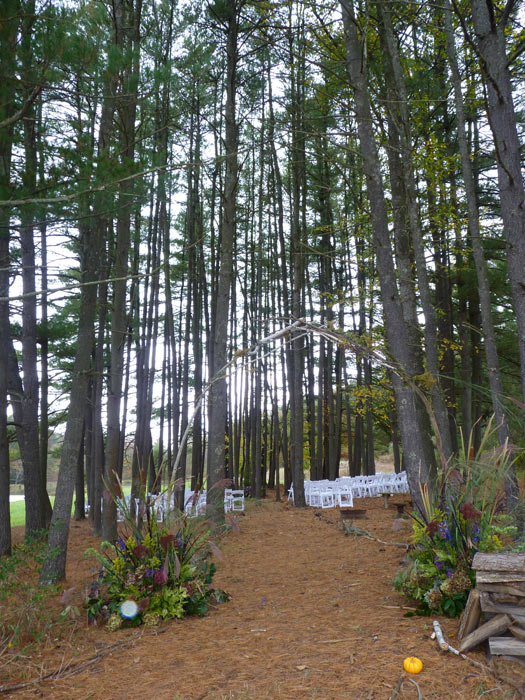
The bride and groom, Briel and Jonathan, who are “spiritual but not religious” people, wanted to make the ceremony respectful to multiple faiths. They also wanted to have both a male and female as officiants for a duality/balance of energy. Therefore, I co-officiated the wedding with Jonathan’s father, Robin. Robin and I came from different paths but from a position of mutual respect and worked in the months leading up to the wedding with Brie and Jonathan to create their ceremony. I think that even in my interaction with someone of a different faith, druidry, and its emphasis on diversity and embracing difference played a role. The ceremony itself was beautiful and had various elements brought in from druidry including three deep breaths, the celebration taking place in a sacred grove and in a circle, and rooting their union in water and earth.
Most officiants are good at rituals and public ceremonies; they think about how people enter the space, how the ceremony flows, how to craft the ceremony specifically for the couple, and how to make the day as special as possible. And certainly, my training with the AODA and OBOD and my experiences in writing and running rituals for our grove and the East Coast Gathering has prepared me to do that kind of work. This is one small part of the “Oak knowledge” that druids provide. But since I had a co-officiant with more experience in wedding ceremonies than I did, I found my role a bit different and it was due to my training in other areas of druidry.
The second kind of “oak knowledge” comes from an understanding of the natural world in terms of ecology, plants, and foraging skills. The wedding was performed in a lovely white pine grove near a lake and a wooded hillside. I had spent some time exploring the grove prior to its selection as the wedding site. After we choose the the grove for the ceremony, I was quick to point out the poison ivy vines growing near the back of the grove. I taught the wedding party about how to identify a poison ivy vine (by its massive amount of roots attaching to the tree and its leaf pattern). This way, as we were setting up for the ceremony, nobody would accidentally sit too close to one of the vines. I also showed the wedding party the bountiful amounts of wintergreen that was growing in vibrant green and red just below the white pine needles on the grove floor. I harvested big bowlfuls of autumn berries, which were growing bountifully in the region (my cousin, who abides by a raw foods diet and lives in NYC, was particularly appreciative of such knowledge!). We had autumn berries in salads and in our oatmeal for breakfast. I picked wood sorrel and purslane, which was a bit beyond their season but still tasty, and added them to our salads. I taught others how to identify these plants and enjoy them when they were in season, and other look-alikes to avoid. I found a yellow-jacket nest in a field where people were walking and pointed it out so that people could avoid the area and a confrontation with the hornets. I learned from another forager who came from the groom’s family about making rope from dog’s bane. All of this knowledge, this natural world knowledge, added something unique to the ceremony. All of this knowledge was the “oak knowledge” that we druids have–and I was also able to add to my knowledge through learning about dog’s bane and rope making!
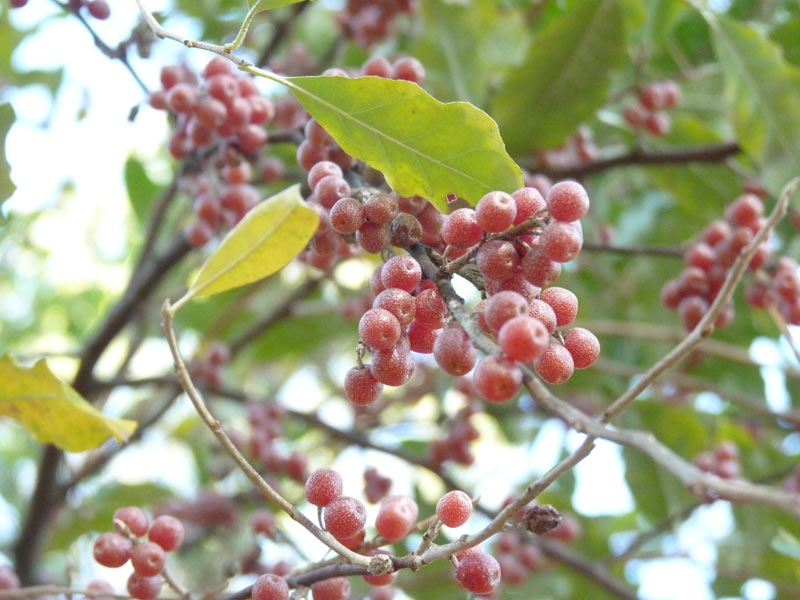
In addition to the ecological knowledge, I was able to share with Briel and Jonny information on the magical and spiritual aspects of their chosen location. We spoke of the white pine as a magical tree, and its benefits. I told them of the positive energy they brought by choosing to hold their ceremony in an evergreen grove and with a second evergreen plant (wintergreen) below their feet. From the earth and up into the sky, they had the symbols of eternity and everlasting unions around them.
The training in the bardic art of music and the arts represents yet another area of druidic “oak knowledge.”When it was revealed a week before the ceremony that they needed more live music, I brought my panflute, which I have been playing since working on my AODA 2nd degree music spiral and my OBOD bardic grade. During the ceremony I played two songs. I also played my flute and the drum during the talent show (eisteddfod!) that we had the evening before the ceremony. Prior to the ceremony, I crafted their wedding gifts (handmade teas), their guestbook (from recycled and handmade papers), and their wedding invitation painting. All of these bardic arts also added positive energy to the ceremony!
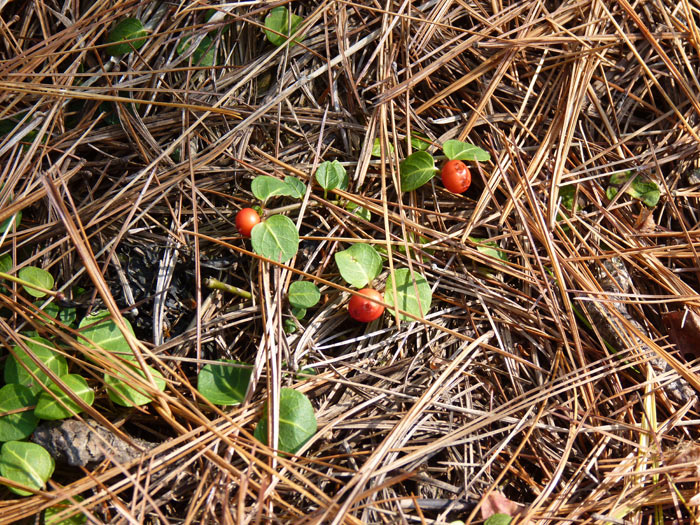
My gardening and work in sustainability, which I speak of much on this blog, also found a home in the weekend’s activities. I canned and brought a number of jars of homemade pasta sauce, which we shared with friends and family.
Part of their ceremony involved working with earth and water. To supplement the energies of their ceremony, I brought sacred waters that came from many different places: the headwaters of a local stream where me and my sister grew up, the headwaters of the Huron river in MI, waters from two great lakes, water from our grove’s Imbloc ritual last year, water from the Delaware Water Gap, and water from Iona, the Island of the Druids. I’ve been collecting such water for some time, and I hope it brought blessings to them.
Finally, when things became stressful and tensions ran high, which is all too common at any intensive weekend like a wedding, I was able to draw upon the druidic value of peace and my own work with daily meditation to smooth over not only my own emotions, but help others in my family. Silently reciting the druid’s peace prayer and seeking the forest for grounding, I was able to remain calm.
When I think back upon this weekend, I realize how much the druidic path, and its multiple foci on the bardic arts, knowledge of the natural world, practice with meditations, ceremonial knowledge, and knowledge of the spiritual and magical world has enriched my own life, and now, enriched the lives of our two newly joined families. I think this experience was unique in that it showed me just how much seven or so years of dedicated druidic study can offer–not just to the individual who studies, but to the world at large. And I want to stress–before druidry, I would have been able to offer none of what I was able to offer above. My story is not a testament to my own creative abilities, its a confirmation of the power of druidry and its dedication to different kinds of knowledge paths.
And there’s one more thing I want to say. When people ask about druidry, as several did, I usually like to talk about what I *do* rather than what I *believe.* I think this action-based druidry, and introducing my family (including many of those who were previously unaware of my path) to druidry through action is much more powerful than saying “here’s what I believe.” I didn’t talk much about druidry last weekend. But I embodied it.
And so, fellow druids and earth-path walkers, embrace the idea of “oak knowledge” and the activity that it can bring. After seeing its power in such a direct and meaningful way, I really feel that its not just about being good at one aspect of druidry. Its about having a solid understanding, a generalist knowledge, in all of the aspects of druidry. This is is useful knowledge, practical knowledge, knowledge of this world and of the ones beyond. This is oak knowledge.
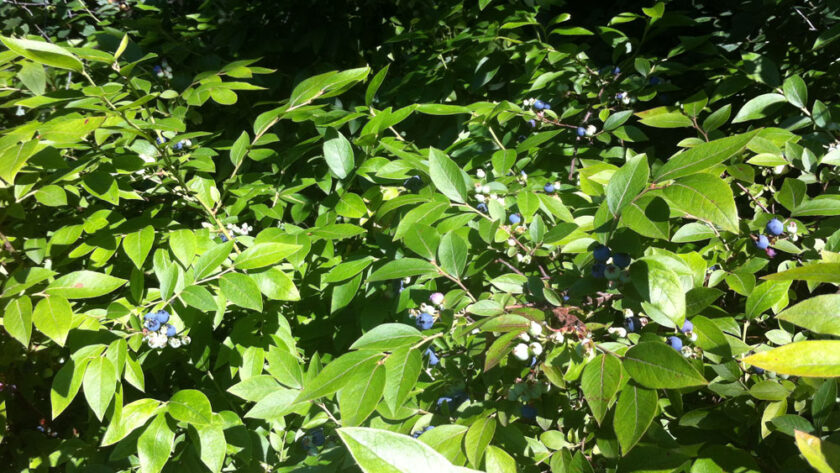


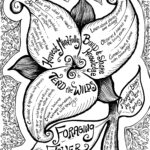
Awesome. And very encouraging.
Thank you! 🙂
What is believed is knowledge, but what is done is wisdom.
Reblogged this on The Surfing Druid.
Hey Dana, another wonderful post I enjoyed here on your blog. I found it by searching everything “ovate” this evening. I finished the bardic grade and sent my application for the ovate grade to my mentor this afternoon. So excited for this next step. Your thoughts about oak knowledge resonate so much with my own. For me it feels like druidry is the name, philosophy and actions of all those things I’m doing for a long time now. From an outside construct it turned into a fundament of life and is now the core of how I want to consciously live my life. I’m very happy about the vast amount of articles here – that’s like a treat in the evening every now and then.
Hi Claudia,
I’m happy to hear about your journey into the ovate grade–what a huge accomplishment! Thank you for your comments and blessings on your journey!